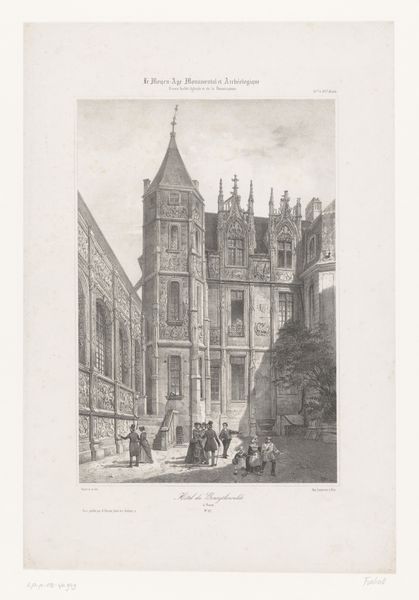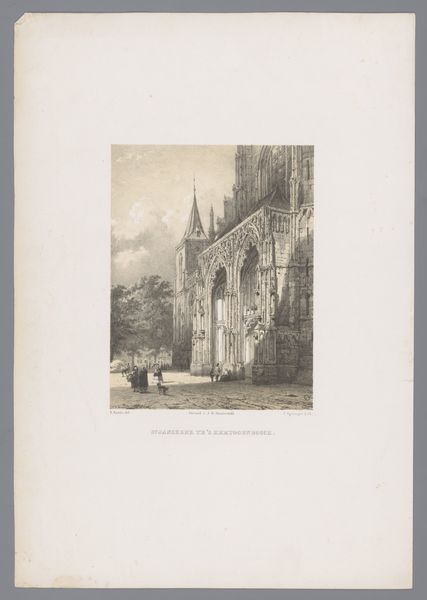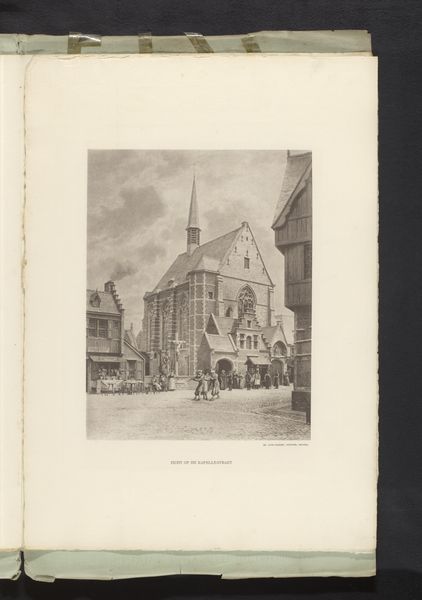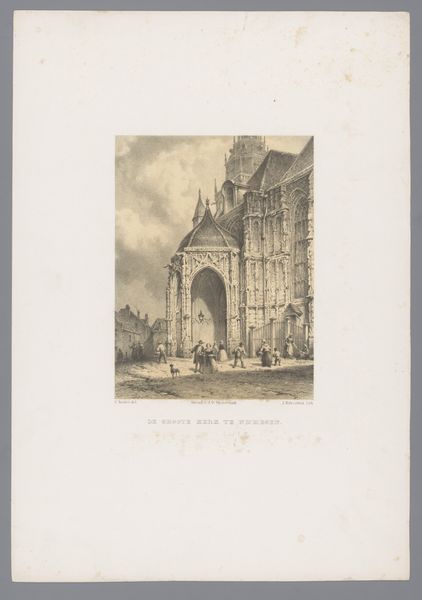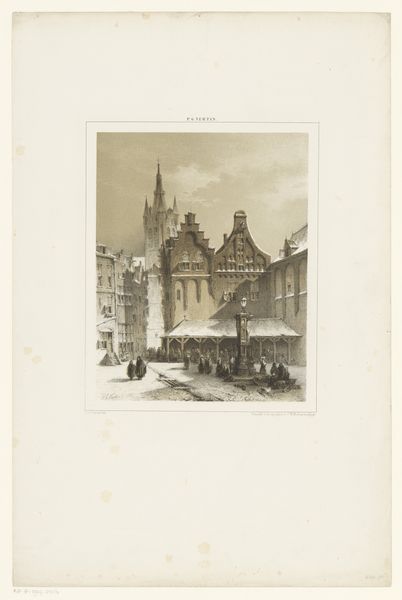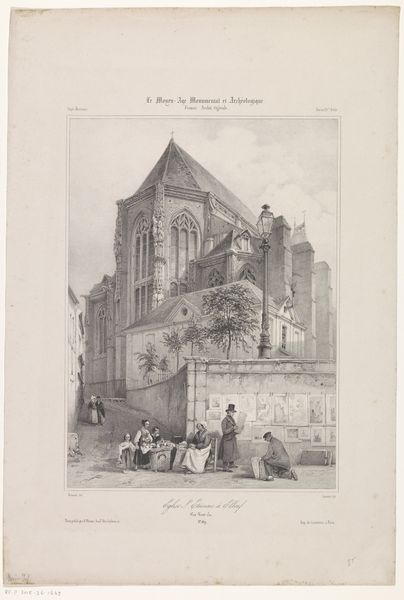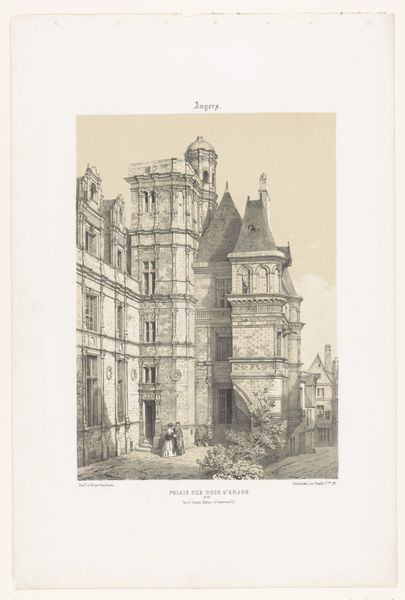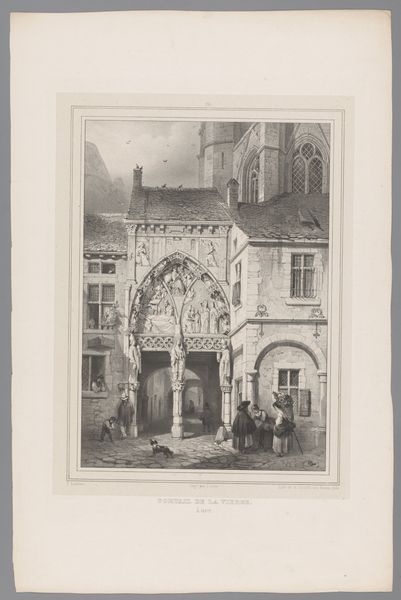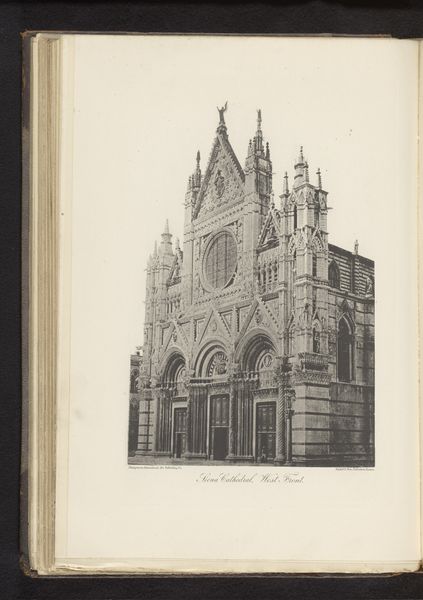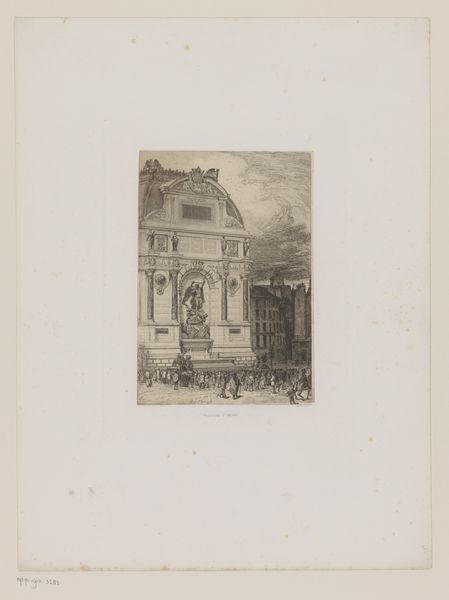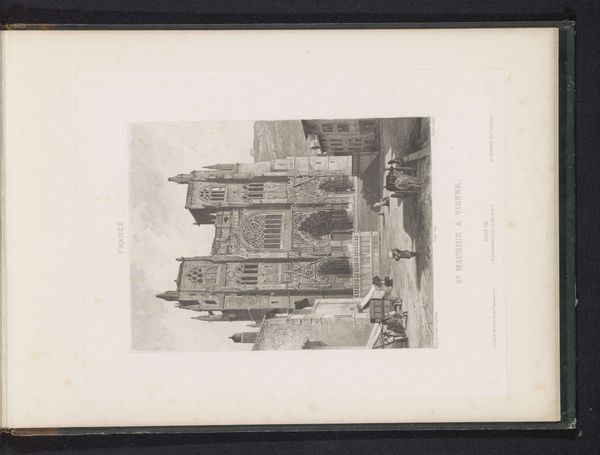
drawing, print, etching
#
drawing
# print
#
etching
#
landscape
#
cityscape
#
watercolour illustration
#
genre-painting
#
sketchbook art
#
realism
Dimensions: height 224 mm, width 145 mm
Copyright: Rijks Museum: Open Domain
Curator: Looking at this print, what captures your attention first? Editor: Definitely the feeling. It's like stepping back in time, quiet and contemplative. All that meticulous etching creates such texture; it practically breathes the same air as the figures. Curator: Precisely. This etching, a drawing really, is titled "Twee wassende vrouwen in Boppard," which translates to "Two Washing Women in Boppard," created in 1833. The location is currently the Rijksmuseum. What a captivating example of, perhaps, genre-painting or, let's say, just… realism! Editor: Absolutely, realism. Look how the building behind them dominates. What is it about those angular lines, against the women, curved over laundry? Opposites that heighten something melancholic. Almost oppressive. It dwarfs the women—are they faceless in this rendition of 1833? Or maybe it is, rather, a silent admiration in this historical place, for their life? What an existence it must have been. Curator: A profound contrast indeed. You pick up on this really important dichotomy. The formal elements reinforce the story of the structure, as much as that of labor. Did you notice the texture and detailing in the print, achieved through meticulous etching? It's all in the architecture. That is a visual echo. The structure stands firmly, having seen much, while the women in this everyday moment may signify their quiet perseverance. The birds may indicate they’ll endure. Editor: It is a nice contrast. The rigid structure of the architecture, yes, versus the fluid forms of the women and their washing. Almost like the constraints they were born into, and the life they make, within it. It speaks to an older style where everything means something in symbolism, even the flock of birds circling the building. I just can’t help feel for them and their simple way. A lot of these etchings I've seen feel a little staged. The lighting—is there too much perfection or is it raw realism. Curator: But realism doesn’t deny light nor staging. Editor: Right you are. It all comes down to that balance, right? The artist is reflecting the spirit of the women that the artist noticed, not documenting necessarily in photorealism. I agree that it speaks to survival, perhaps, and continuity of all—buildings and all, really. A poignant, perfectly balanced slice of old German life in rendering. Curator: Well said. Indeed a picture tells a thousand stories of continuity, from washerwomen to today.
Comments
No comments
Be the first to comment and join the conversation on the ultimate creative platform.
